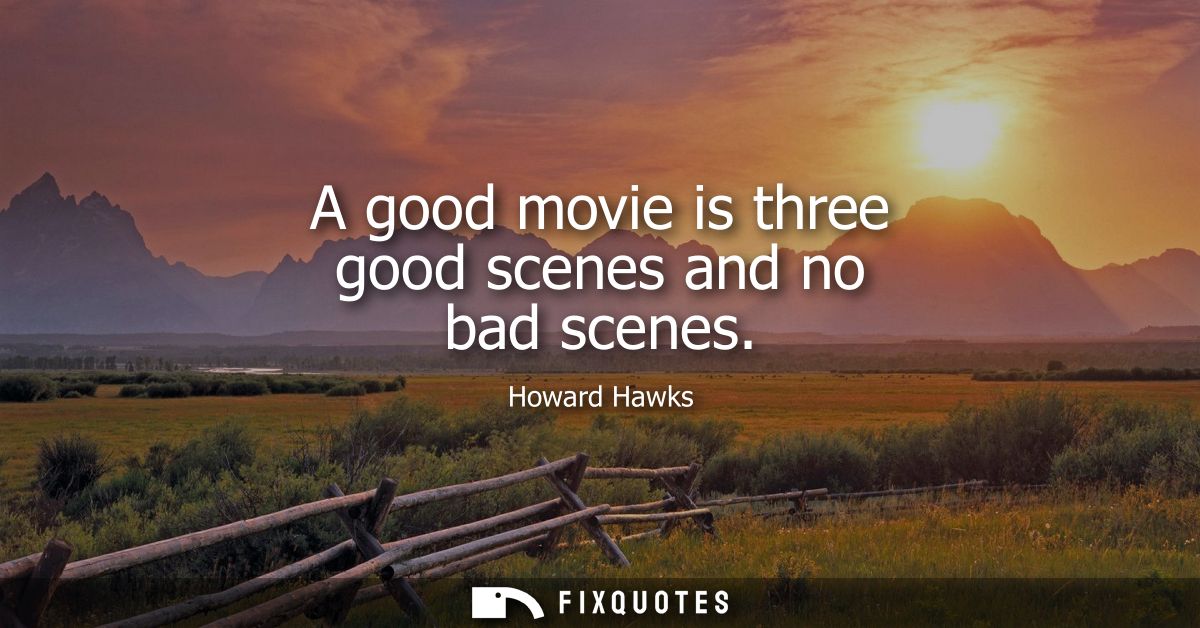"A good movie is three good scenes and no bad scenes"
About this Quote
Howard Hawks, an influential director in the Golden Age of Hollywood, distilled the essence of filmmaking into an elegant formula: three good scenes and no bad scenes. His approach encapsulates both simplicity and clarity, focusing on the idea that stories thrive on powerful moments while maintaining a consistent standard throughout. Good scenes, those with emotional resonance, striking visuals, or sharp dialogue, are the pillars that audiences remember long after the credits roll. They define the soul and character of a film, stirring reactions and engaging viewers on multiple levels.
Yet, just as vital is the absence of bad scenes. One weak link can break immersion, slowing momentum or undermining the narrative. Hawks' philosophy implies that mediocrity, rather than outright failure, is the real enemy of storytelling. By emphasizing “no bad scenes,” he suggests that craftsmanship matters as much as inspiration, and that filmmakers must be ruthless in trimming, revising, or abandoning anything that doesn’t serve the film’s purpose. Highs become more meaningful when juxtaposed with consistent quality everywhere else; the valleys between the peaks should never drag the film down.
The idea of only three good scenes might seem reductive, but it’s a call for focus. Instead of trying to make every single moment unforgettable, filmmakers should strive for a few moments of genuine greatness. Audiences rarely walk away quoting every line or remembering every image, but a handful of extraordinary sequences will linger in the mind and shape the legacy of a film.
Hawks champions economy and discipline in storytelling. Rather than excess flare, he prioritizes precision, suggesting that excellence is achieved not just through brilliant flourishes but also through competent, invisible craftsmanship that carries the audience smoothly across the span from one memorable scene to the next. In this balance, great films are born.
More details
About the Author

